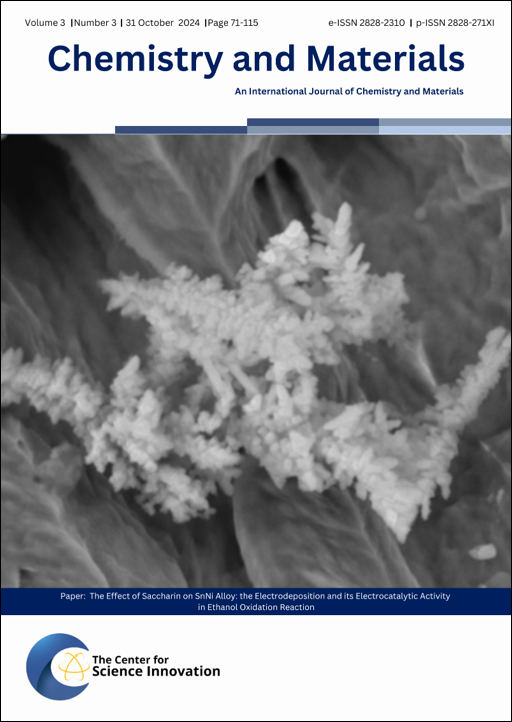Synthesis of Copper(I) Oxide Thin Film Through Potentiostatic Electrodeposition as an Antioxidant Film
DOI:
https://doi.org/10.56425/cma.v3i3.83Keywords:
antioxidant, ascorbic acid, Cu2O nanofilm, electrodepositionAbstract
Research on metal-based nanoparticles, such as silver, gold, and copper(I) oxide (Cu2O), has drawn considerable attention due to their potential applications in catalysis, antioxidants, antimicrobials, and anticancer fields. In this study, we successfully deposited Cu2O antioxidant films on indium tin oxide substrates through potentiostatic electrodeposition. The X-ray diffraction characterization revealed distinct peaks at 2θ value of 36.32°, 42.21°, and 61.30°, indicating the crystal structure of Cu2O thin film. The scanning electron microscopy image showed the three-sided pyramid morphology of Cu2O particles with average size of 316.18 nm. The energy dispersive X-ray spectrum confirmed the purity of the thin film, which is composed only of Cu and O elements without any impurities. The photoelectrochemical showed that the deposited Cu2O has a maximum photocurrent density of 8.37 mA/cm² under visible light irradiation and 1.40 mA/cm² without irradiation. In addition, this study also found that the highest inhibition values of DPPH (2,2-diphenyl-1-picrylhydrazyl) radicals were observed when ascorbic acid was added.
Downloads
Published
Issue
Section
License
Copyright (c) 2024 Muhammad Adya Raihan, Shirly Harissyah Alfiani, Sabrina Putri Chaerani, Rachmaniah Nurul Imani, Alsifa Andita Putri

This work is licensed under a Creative Commons Attribution 4.0 International License.



